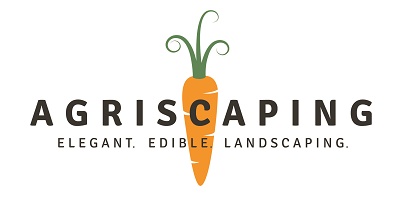Spring Gardening – the Agriscaping Way Part 1

Spring Gardening – the Agriscaping Way Part 1
*By Cindy Dixon
Agriscaping teaches the 3 steps to garden success: Healthy Soil – Healthy
Seeds/Starts – Healthy Routines. It’s as easy as ABC!
Always, always start with healthy soil:
There’s more to soil than meets the eye! Soil holds and supports plants while
providing the moisture and nutrients needed to grow into viable, nutrient-rich
crops. The quality of food we harvest from our garden relates directly to the quality
and health of the soil. In fact, more than 70% of garden problems are related to soil
issues. It has been stated, “If you have $100 to spend on your garden, spend the
majority of it on soil.”
The question is, “What is healthy soil?” Healthy soil is a dark, crumbly sweet-
smelling medium teeming with life, where millions of microorganisms convert
minerals and chemicals into substances plants can use to grow. Think of the
analogy of chocolate cake! To make healthy soil, add organic matter which allows
the microorganisms to thrive; thus, creating nutrient-enriched soil. Compost, leaf
mold, composted manures, plant/kitchen scraps, and cover crops are just a few
ways to add much-needed organic matter to your soil.
Crop rotation is another method to help keep your soil from becoming nutrient
deficient. Agriscaping offers a simple way to remember the crop rotation sequence:
Root – Fruit – Bean - Green
If you become a soil gardener first, the thriving plants will follow. Think of plants as
the antennae of the soil. Your plants are only as healthy and nutritious as the soil
they are planted in. Healthy Soil – Healthy Plants – Healthy People
Don’t treat your soil like dirt!!
Be sure you have healthy seeds/starts (seedlings)!
Once you have your soil in shape, it’s time to plant seeds or transplant those
starts/seedlings into your garden. There are advantages/disadvantages to seeds vs.
starts (seedlings). There is no acclimation period when planting seeds since they
will be growing in the intended environment from day one. Sowing seeds delays the
instant gratification you get from planting starts. However, more often than not, the wait is well worth it! There are myriads of options to choose from if you decide to
grow from seeds. Look for high-quality organic seeds such as heirloom, native
seeds, and open-pollinated, to name a few. You might want to check our local seed
banks in your area as well.
Sow, let’s get started and seed what happens! Then join us next week to find out more about seedlings and creating a healthy routine for your gardening this spring.
To find out what webinars or live classes are available for free click here!
* You can find out more about Cindy Dixon at lasvegas.agriscaping.com .

